Build a new workflow
Workflow86 AI is currently in private beta. Join the waitlist to get access
Workflow86 AI can build fully-configured, ready to run workflows based on your description, instructions or requirements.
Starting a workflow build session
To start a workflow build using the AI, open the AI panel and select Build a new workflow.
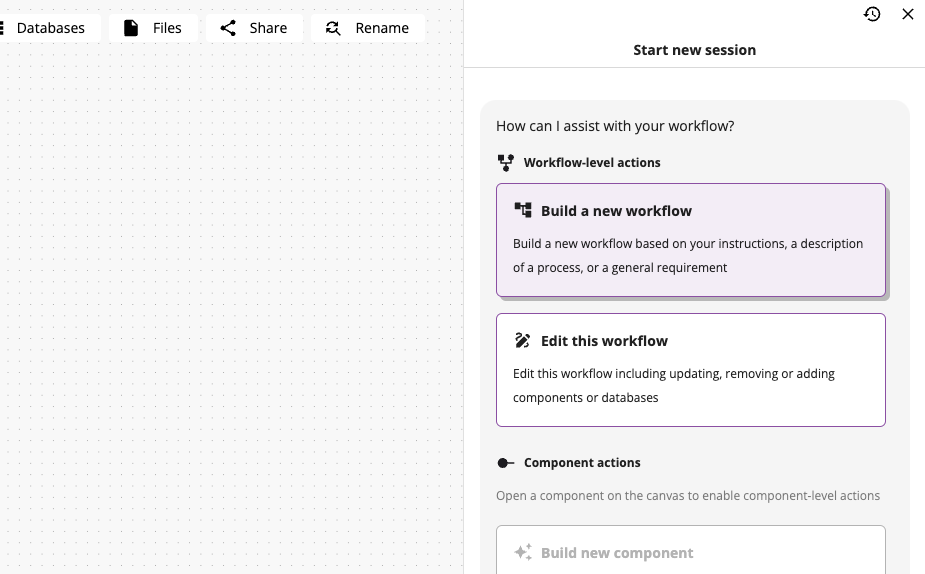
Type in a request, requirement or description of a business process or workflow.

Be as specific as possible when prompting the AI to build a workflow - providing numbered steps like "1. Do this 2. then do this..." helps the AI structure the workflow. Include as much information as possible - if there are any ambiguities, the AI will return clarifying questions for you to answer.
If you are unsure of what to type, you can select one of the suggestions.
Answering questions from the AI
If there are any ambiguities or information the AI assesses as required to design a valid workflow, the AI may return a set of questions for you to answer.
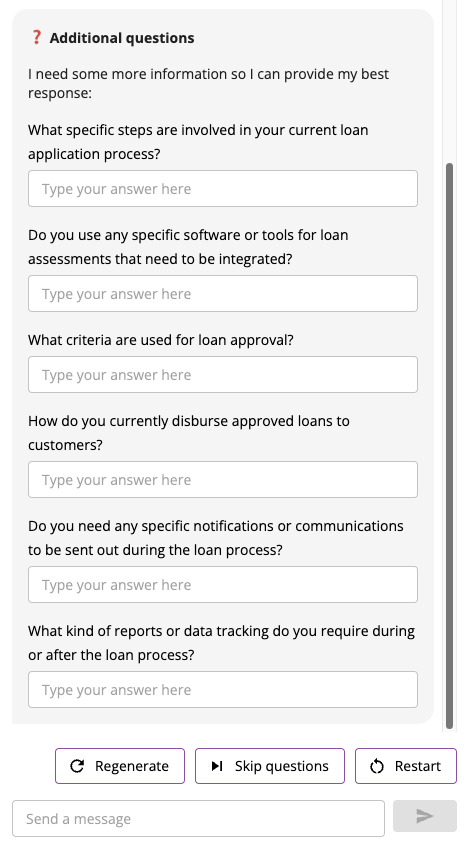
Type in an answer to these questions. You are not required to answer all questions, but the quality of the AI built workflow will be significantly improved by answers to these questions.
You can also choose to skip all questions and instruct the AI to make its own assumptions to fill in any gaps or ambiguities. These assumptions will be disclosed in the proposal.
Reviewing the proposal
If or once the AI has sufficient information to design a workflow, it will return a proposal. This is a rough draft with an initial selection of best fit components required to meet your request.
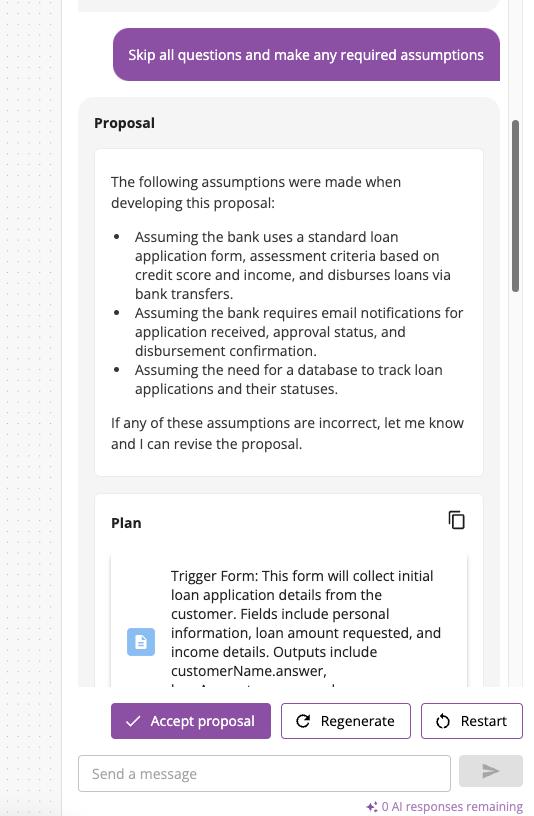
You can send an additional message to the AI if its initial proposal does not match your requirements.
Streaming the draft workflow to the canvas
Once you have accepted the proposal, the AI will begin to stream the workflow component by component into canvas. You will see components appear on the canvas one by one, with connections configured and the canvas view focussing on each new component as it streams in.
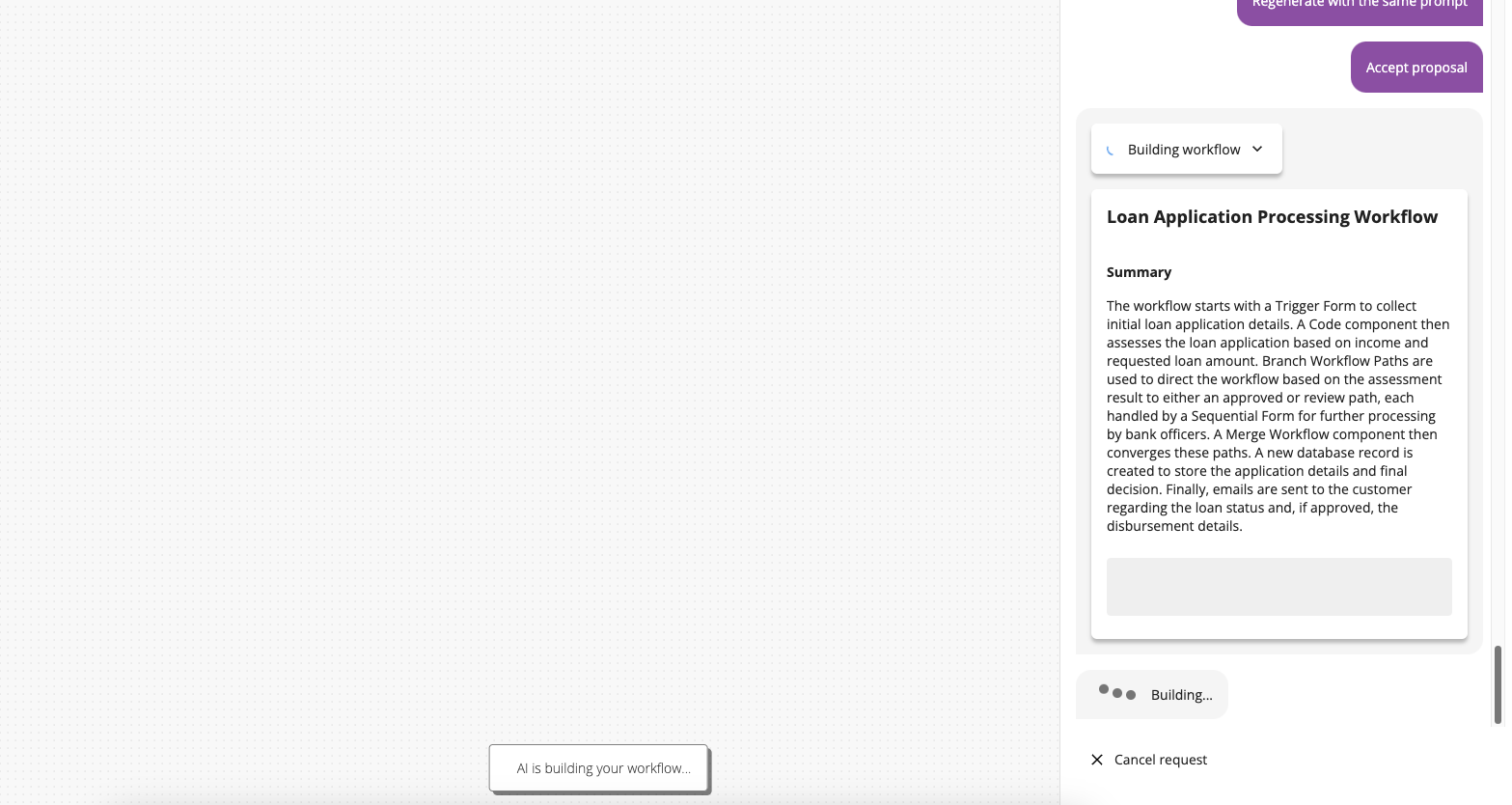
Once the workflow has finished streaming, you will be presented with the option to accepted the draft and start the build, or to send additional messages or requests to the AI.
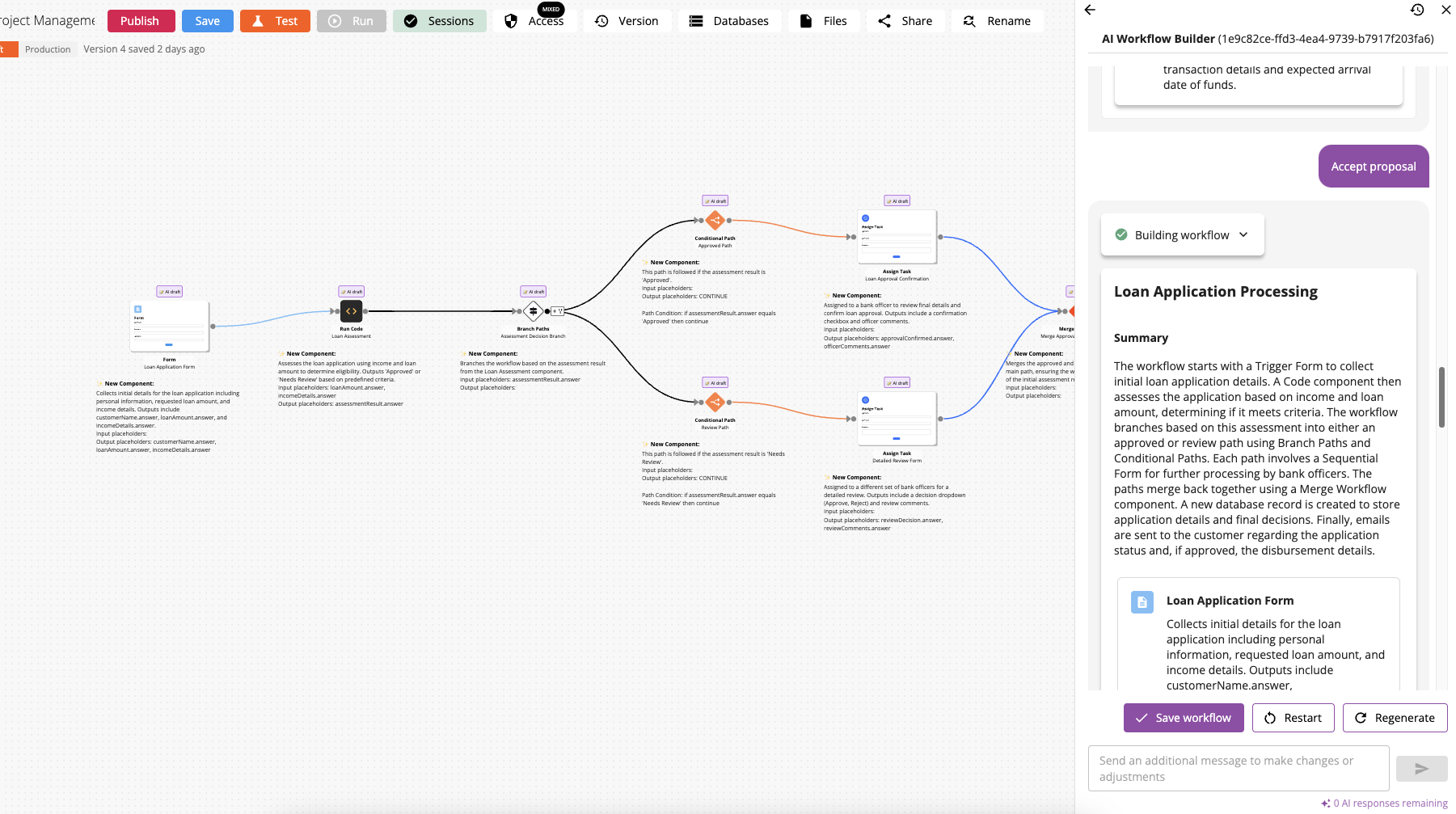
Carefully read the component explanations
Underneath each component drafted by the AI will be a description or explanation of what that component does. Carefully read and check these descriptions as they capture the AI's understanding of what this component does within the workflow. Ensure that component explanation as written by the AU matches your requirements or instructions.
Making changes to the draft
Once the draft workflow has completed streaming to the canvas, you can send additional requests or messages to adjust the workflow. You can use this to make adjustments to the components and connections the AI has returned and address issues which as missing components or incorrect connections.
Note that each of the components has not yet been configured in the draft workflow. Configuring the components to a fully-functional state occurs at the next step once the draft has been confirmed.
You can still use the AI to edit or make changes to a workflow after this point so do not worry if you are unsure of what additional changes or adjustments need to be made at this point.
Confirming the draft and starting the build
Once the draft has been accepted, the AI will save the workflow to the canvas and immediately begin building all components. The progress of each component being built will be displayed on the canvas and in the chat.
Once all components have been successfully built, you can open any of the components to inspect them and check whether they have been configured correctly. You can also choose to close the chat or send an additional message to make changes. Any additional messages made at this point count as an AI edit of the workflow.
Component build errors
While building all components in the workflow, the AI may encounter an error for a specific component. When this occurs, a retry button will appear which can be clicked to retry the AI build of that component.
Tips and best practices
It is recommended that you do not use the AI to build a new workflow inside of a canvas which already has a workflow inside of it. This is to avoid complications with using the AI to edit the workflow. It is generally best practice to restrict each canvas to one workflow only.
If you need to build another workflow inside of canvas with another workflow, it is recommended that you drag the canvas view to somewhere clear of other existing components before starting the AI workflow builder.